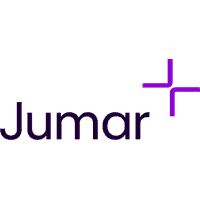Just over a year ago, in June 2022, the UK government launched its new Roadmap for Digital and Data, which set out a collective vision regarding the approach to technology and, crucially, the top 75 public services that need to move to a ‘Great’ standard to achieve the government’s outcomes. These services will inevitably rely on digital platforms of varying age and complexity that will need careful analysis and modernisation in order to make the grade.
At Jumar, we have been delivering complex modernisation programmes for mission-critical systems for 20 years, systems that “can’t” fail, that must continue to provide their service during the modernisation process, and that have often been built and maintained by various teams over the system lifetime.
Given this experience, our team have collected a number of important aspects to consider when approaching a programme of this kind.
Firstly, along with any type of change programme, it is important to have a clear understanding of the outcomes you are going to achieve with realistic timelines. Not only will this give you a better chance of hitting your targets it will help all stakeholders to understand and contribute in an effective way.
Secondly, settle on an agreed approach to the modernisation of the various elements of your technology stack, whether that be replacing, rewriting, replatforming etc. These have different demands on technology, finances and people in your organisation beyond the technology team. By resolving these questions early on, you are more likely to plan effectively with all affected parties.
In a modernisation project it can be hard to accept that a lot of money and effort will be invested in an outcome which is likely to be functionally much the same as before – the value is often realised in the flexibility and maintainability of the future solution, when integrating with other systems and supporting future requirements. With this in mind, it can be hard to resist the temptation to add significant extra functionality during your modernisation process. A project that has new features included is easier to swallow from an investment point of view, but it adds complexity to projects that are not without their challenges. Build in the capabilities to add / amend functionality in your modernisation work, and leave the functional changes for later or parallel efforts. It is likely to be cheaper in the long run.
Next, include as much tried-and-tested automation in your development, test, deployment stages etc. This may require some piloting in the early stages of the project, but over the life of this work the return on investment will become increasingly important, and will improve the consistency and repeatability of your processes.
Finally, break it down to smaller pieces of work, if at all possible. Functional isolation can identify specific elements of your systems that can be safely modernised and interfaced to the legacy core, reducing the risk of issues when commissioning the new platforms. This can be more effort, but when working with business-critical applications that support key public services the elimination of risk is a key consideration.
Every legacy modernisation is a different challenge and exists in its own ecosystem of associated systems and dependencies, with a large number of stakeholders who often have very different priorities when considering these changes. Go into them with your eyes open and experience of the challenges, and your chances of success are massively increased.

Jumar
Jumar delivers exceptional digital services, with a global reputation built on successful, enduring partnerships with clients. With a comprehensive range of expertise in software engineering, cloud computing, architecture, business analysis, service design and app development, Jumar can quickly align its capabilities with the objectives of its clients. Jumar is proud to be Microsoft Solutions Partner with a specialism in Microsoft Azure, and has earned the trust of public sector organisations across Central Government, defence, health, education, transport and security, guiding them through transformative modernisation journeys.


-4.png?width=80&height=80&name=Untitled%20design%20(77)-4.png)
